Day 2 of a two day Private Tour in North Norfolk today. As ever, the forecasters couldn’t make up their minds over the last few days what the weather would be doing today, but they had finished up typically pessimistic this morning. It was a damp, drizzly, grey and gloomy start, at which point it looked like they might be right, but then it dried up and brightened up and ended up being not too bad at all in the end.
We were heading west today, but on our way we made a quick stop at Holkham first. As we got out of the car, we could hear a pair of Egyptian Geese calling from the trees. We could hear lots of Pink-footed Geese too, and looked across to see a large flock fly up from the grazing marshes. They came straight over us and headed off inland. A steady succession of skeins flew over, but still more circled back round and landed down on the grazing marshes again. We could still see thousands of geese out on the grass.
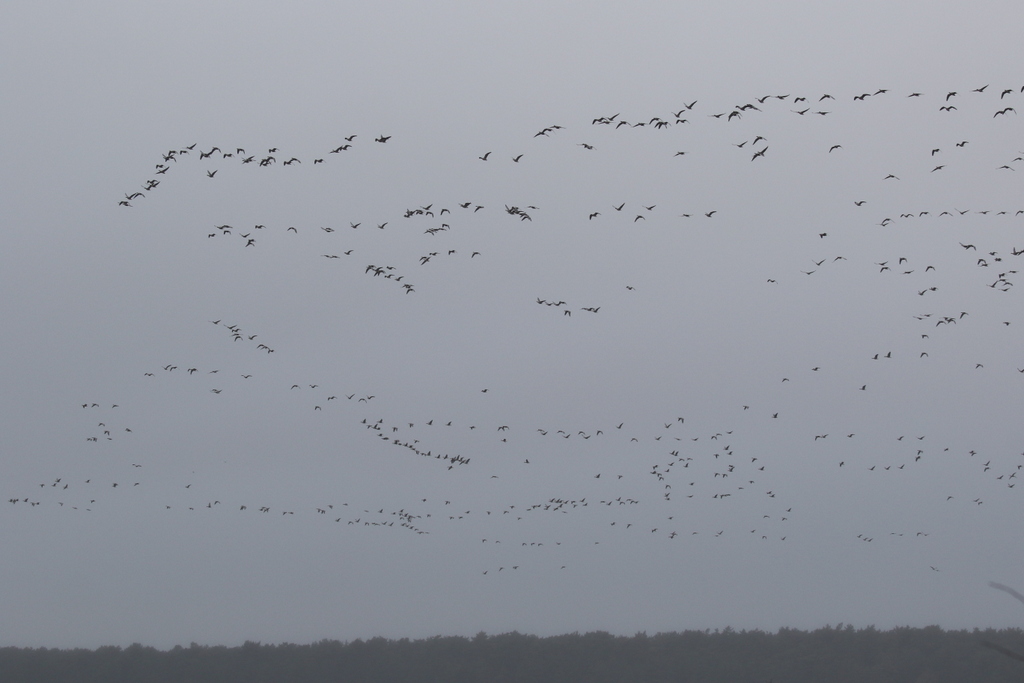
There were Greylag Geese too, a much smaller flock out in the field in front of us. We could see they were paler grey with a big orange carrot for a bill. Just beyond the hedge, through a gap, we spotted a group of about ten Russian White-fronted Geese. We all had a good look at them through the scope, noting the white surround to the base of their pink pills and their distinctive black belly bars. Then suddenly they took off for no apparent reason and we realised there had been a lot more hidden behind the hedge, about 55 in total. They flew off back over the grazing marshes.
A large white bird also out on the grazing marshes was a Great White Egret. It was obviously very tall and, through the scope, we could see its long yellow dagger of a bill. A Marsh Harrier was perched in a tree in front.
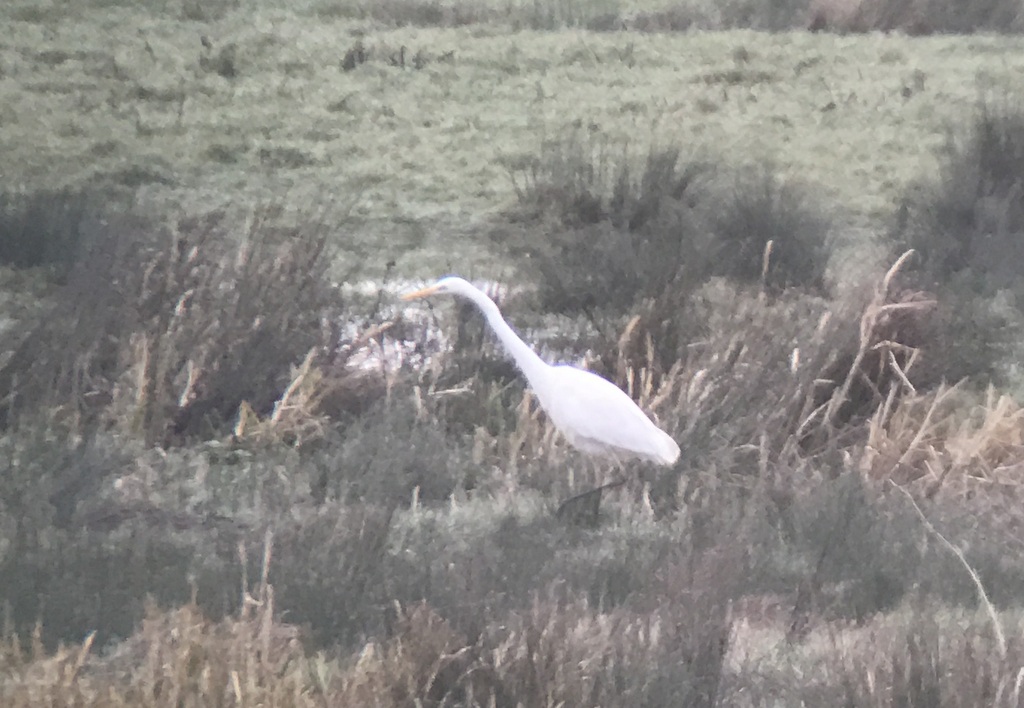
By the time we got to Titchwell, it had at least stopped drizzling, although it was still very dull and grey. There were not many cars yet, so we had a quick look round the overflow car park. There were lots of finches in the bushes, feeding on the brambles, mainly Chaffinches and Goldfinches, but with several Greenfinches too. We heard a Bullfinch calling and a smart pink male flew out and across the car park, but disappeared straight into the bushes. We had a couple of brief views of it in the brambles but it would never stay still long enough to get it in the scope.
A flock of Long-tailed Tits came round through the car park, and as we made our way along the path towards the Visitor Centre what was presumably the same flock was calling in the sallows. A Goldcrest appeared in the bushes by the path ahead of us, and we stopped to watch it fluttering around in the branches. A second Goldcrest appeared above our heads, hovering around an ivy-covered trunk. We followed one of the Goldcrests almost all the way to the Visitor Centre.
There were a few more finches on the feeders in front of the Visitor Centre, but the ones the other side had been taken over by a Grey Squirrel. We had a quick look as we passed, but there was no sign of the Water Rail in the ditch, so we continued on out onto the reserve.
As we came out of the trees, several Lapwings and a small group of Golden Plover flew over, heading inland. When we got to the reedbed, we could see a much larger flock of Golden Plover and Lapwing circling over the Freshmarsh. We couldn’t see what had flushed them, possibly a Marsh Harrier, but they quickly landed back down again.
A Water Pipit came up calling from the cut reeds below the path ahead of us. It flew across the path and headed out over the dried up Thornham grazing marsh pool, from where a second Water Pipit flew up to join it. The two of them circled together briefly before the second bird dropped straight back down again, out of view. The first Water Pipit then flew back across the path and disappeared out over the Freshmarsh.
We stopped to look at a couple of Marsh Harriers circling over the back of the reedbed, and noticed four more were perched together in one of the dead trees. Then looking out across the Freshmarsh, four more harriers were hanging in the wind over the bank beyond, at the back of the Volunteer Marsh. One was noticeably smaller, and through the scope we could see the white square at the base of its tail. It was a Hen Harrier, a juvenile, noticeably rusty orange below, streaked darker.
It looked like the three Marsh Harriers were mobbing the Hen Harrier at first, but two drifted off and the Hen Harrier ended up tussling just with one juvenile Marsh Harrier, giving as good as it got. The two of them kept swooping at each other for ages – great to watch and giving us a good view of the Hen Harrier as they did so. At one point, a couple of Carrion Crows joined in too.
Avocet was a key target for the day. Most of them go south for the winter, but a few normally try to cling on here. From Island Hide, we quickly located the group of about 12 Avocets which are lingering here this year. Initially they were rowed up on the end of a long line of Lapwings, but then something spooked all the waders again, and everything took off. The Avocets landed back down with a small group of roosting Shelduck, where the tern island used to be.
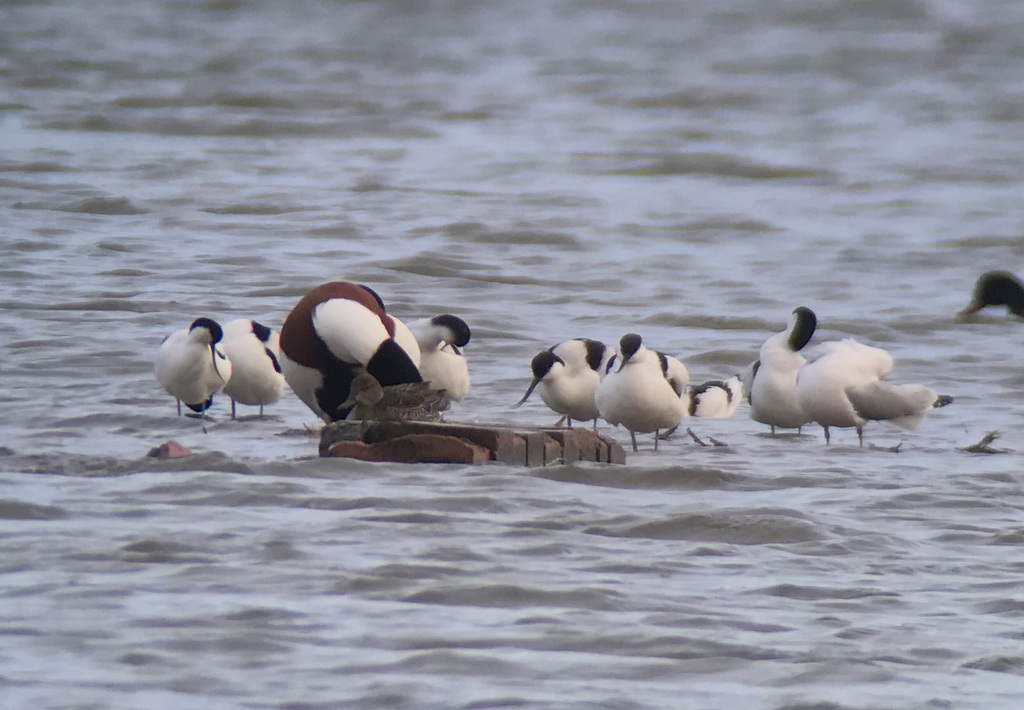
The water level on the Freshmarsh is now very high for the winter, and there are not many of the islands left exposed. Consequently, most of the waders are now feeding elsewhere. Apart from the roosting Avocets and the large flocks of Lapwing and Golden Plover, we managed to find just one Dunlin this morning.
The wildfowl are enjoying all the water. A small flock of Brent Geese had joined with the Greylags on the water in front of the reedbed. They had just dropped in for a wash and brush up before heading back out to the Thornham saltmarsh to feed. There are more diving ducks on here now, with a small raft of Tufted Ducks and Common Pochard next to the geese. The other regular winter ducks here – Wigeon, Teal and a few Shoveler – were mostly over towards the back of the Freshmarsh today.
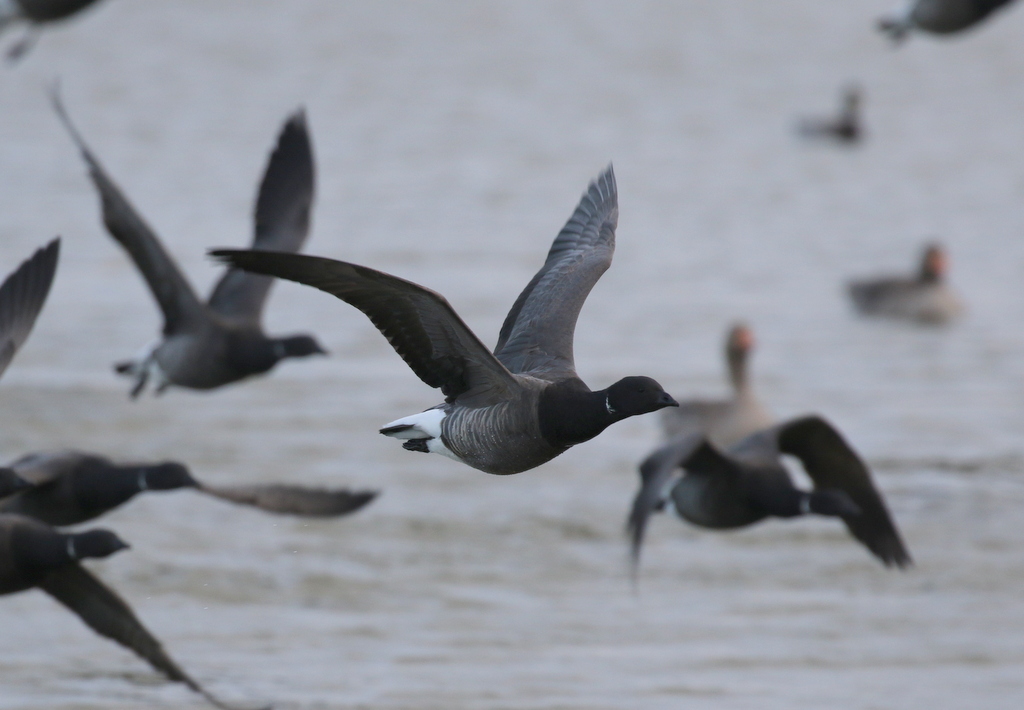
It didn’t seem like the weather could make up its mind. It had been drizzling again briefly while we were in the hide, but now it seemed to be brightening up. So we decided to try our luck and walk out towards the beach. The tide was out and there was not much on Volunteer Marsh, just a rather tame Common Redshank in the channel just below the path.
The Hen Harrier was still playing with the Marsh Harrier over the bank at the far side. We stopped to watch them again, before the Hen Harrier disappeared behind the bank towards the beach. From the top of the bank, we could see the Hen Harrier hunting along the dunes beyond and when it landed in the top of a bush, we got it in the scope and had another good look at it.
The now non-tidal ‘Tidal Pools’ are very full of water at the moment, and the one remaining island is getting much smaller. It was fairly packed with roosting duck today – lots of Wigeon, Teal and several Shoveler. A wader appeared briefly on the corner from behind the vegetation, and we had a glimpse of a long, needle-fine bill and distinctive white supercilium. We walked further up for a better angle and our suspicions were confirmed, it was a Spotted Redshank.

Out at the beach, we stopped first to scan the sea. One of the locals was just leaving and informed us that there had not been much of note out here today. We quickly found a small raft of Red-breasted Mergansers and a couple of Goldeneye just offshore. Four brown female Eider were close in, just beyond the mussel beds. Another drake Goldeneye flew in to join them, its green head with white cheek patch shining in a welcome burst of sunshine. An adult Mediterranean Gull flew past out to sea, but unfortunately it was too far out for everyone to get onto.
There was a nice selection of waders around the mussel beds, so we walked down the beach for a closer look. There were lots of Oystercatchers and a few Curlew and Grey Plover. Several pale, streaked Bar-tailed Godwits were feeding on the edge of the sand, and a Black-tailed Godwit was on the mussel bed nearby for comparison. A mixture of Sanderling, Dunlin and Turnstones were running around in between. Scanning carefully, we managed to find a small group of Knot too, and it was good to see them through the scope, feeding next to the Dunlin for comparison.
On our way back, we remembered we had not seen the drake Pintail on the Tidal Pools on our walk out. So we scanned again from the inner edge of the dunes, and from this angle we quickly found it fast asleep on the island with the other ducks. Not the best of views, but another one for the list. The Little Egret which was now feeding in the channel on the Volunteer Marsh right next to the path put on a much better show. We got a good look at its yellow feet.
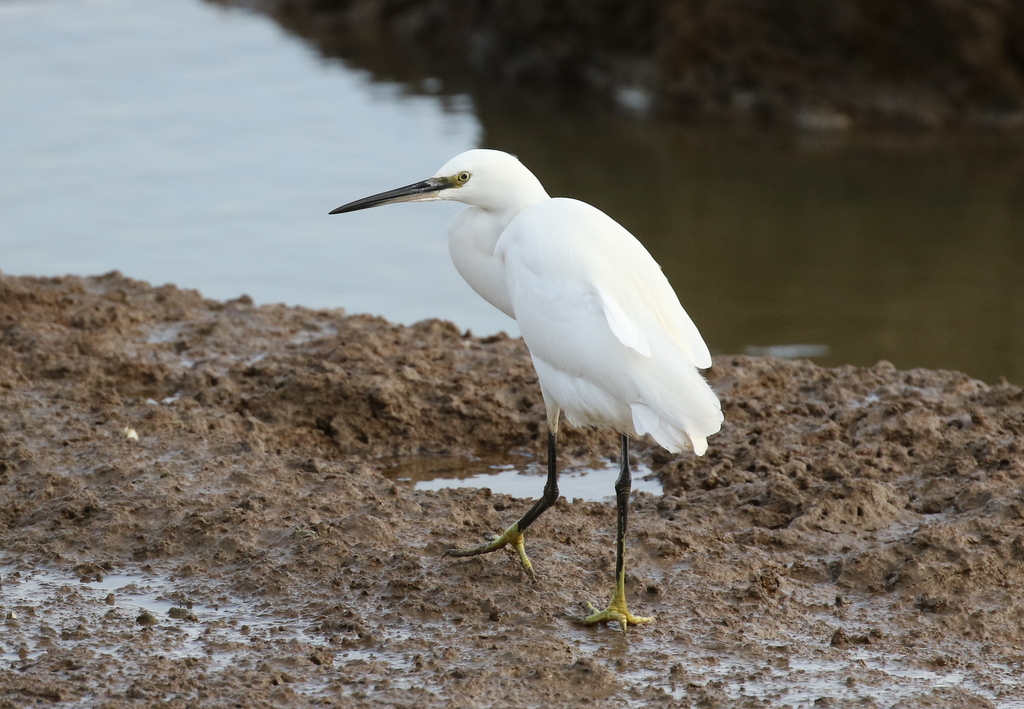
The other bird we had not seen on the way out was the Water Rail, and that too we found on the way back. It was feeding just where we had looked earlier, in the ditch by the path, but was still hard to see down in the water underneath all the tree branches. With a bit of patience, it eventually showed very well though.
Water Rails are a bit like buses, and there was also a second one here now, in the ditch on the other side of the path. It was right out in the open when we first saw it, but as soon as it noticed us watching it, it scuttled remarkably swiftly across and squeezed through a small gap underneath the muddy bowl of a fallen tree, where it was well hidden.

It was lunchtime now, and we felt like we had earned it this morning, so we headed round to the White Horse in Holme for a very welcome quick bite of lunch and a chance to warm up in front of the fire. Afterwards, we drove back to Thornham Harbour.
It had clouded over again now and was feeling rather grey again. A Curlew flushed from the saltmarsh as we drove in, but otherwise it initially looked rather quiet here. A car load of photographers were huddled in their vehicle in the car park with their long lenses pointed out at an empty puddle, where there was a distinct lack of any Twite action.
We walked across the car park and down to the sluice just beyond. As we did so a flock of small birds flew up from the saltmarsh just in front of us. We could hear Goldfinch and Linnet and also the distinctive ‘tveeet’ calls of Twite (from which they get their name) as they circled round above us.
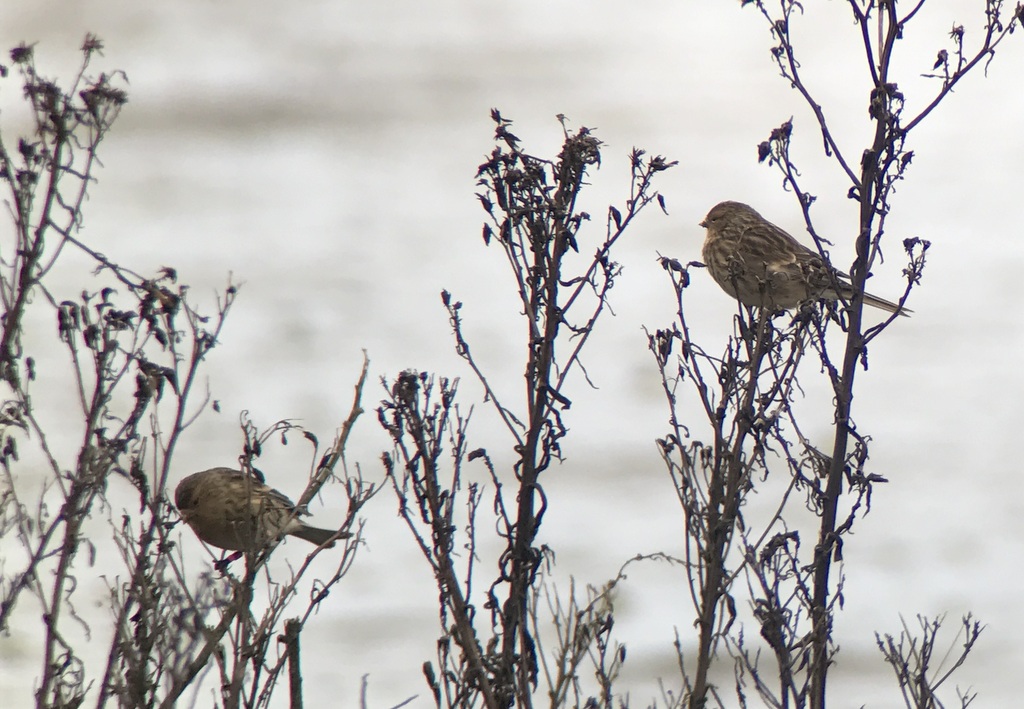
After circling several times they landed back down on the edge of the saltmarsh and we got a good view through the scope as they perched up feeding on some of the taller seedheads. It was really good to see Twite and Linnet in the scope together, the former richer brown overall with an orangey breast and yellow bill.
There were at least ten Twite today and one of them was sporting a collection of colour-rings which identify it as an individual which was ringed in Derbyshire earlier in the year. The dwindling Pennine breeding population is the source of our declining winter population of Twite here in Norfolk.
Having admired the Twite, we got back in the car and headed on west. A large flock of Pink-footed Geese were feeding in a recently harvested sugar beet field close to the road so we stopped for a quick look. We were just scanning through when one of the group spotted something different in with them. It was a Pale-bellied Brent Goose. We found somewhere we could stop and got out for a better look through the scope.
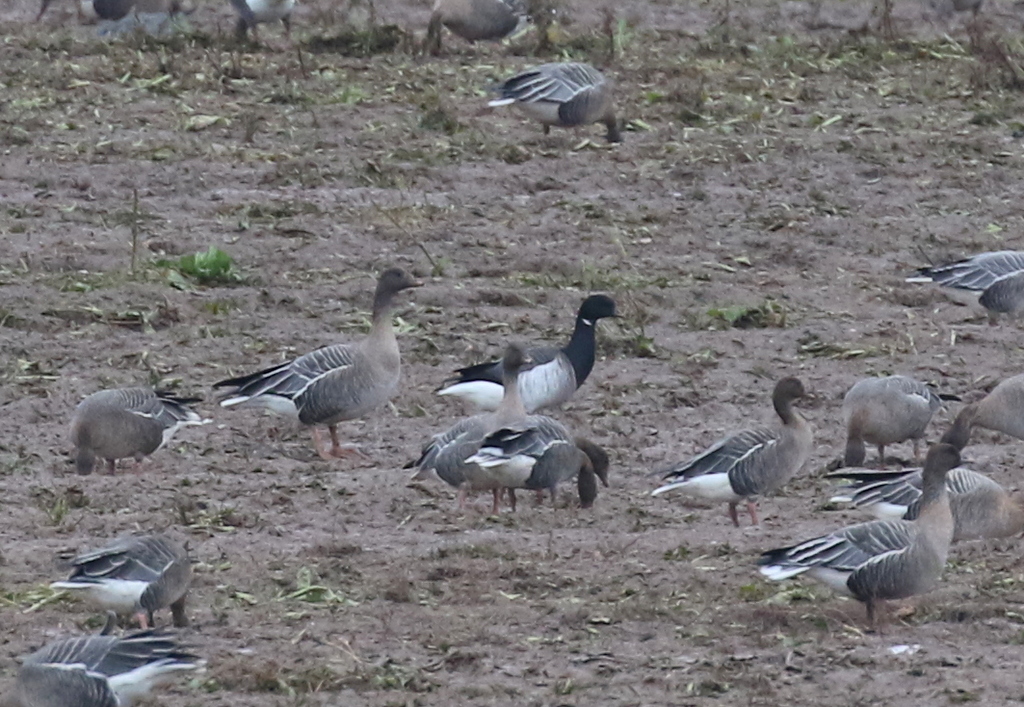
Pale-bellied Brent Goose is a different subspecies compared to our regular wintering Russian Dark-bellied Brents. They breed from Svalbard and Franz Josef Land, across through northern Greenland to Canada. Birds from eastern Canada migrate through Iceland to winter mainly in Ireland and it is probably in Iceland that lone or lost birds may join up with the flocks of Pink-footed Geese (it being better to be with them than travel alone!), which bring them to Norfolk in small numbers. While we were watching the geese, we noticed several Ruff feeding in the muddy field in amongst them.
Our final destination for the afternoon was Snettisham. With all the grey cloud again, the light was already starting to go. It didn’t help that today was the shortest day of the year! From up on the seawall, we could see several Goldeneye on the first pit.
The tide was coming in now but there was still a huge expanse of exposed mud. It was not due to be one the biggest tides today, and it was still a couple of hours to high tide, but the waders were already starting to gather. A large brown slick across the mud out in the middle on closer inspection was a huge flock of Golden Plover. Through the scope, we could also see quite a few Bar-tailed Godwits gathered just behind. More waders down on the water’s edge further back were mostly Knot. A big group of Oystercatchers were roosting on the edge of the beach away to the north.
We were hoping to see a Short-eared Owl here this afternoon, but it was damp and grey with a cool breeze and there was perhaps unsurprisingly no sign of any out hunting. Fortunately we did find one hunkered down under a bramble bush, where it had spent the day roosting. It was only half awake and looking towards us, and we could see the short tufts of feathers on the top of its head, its ‘ears’.
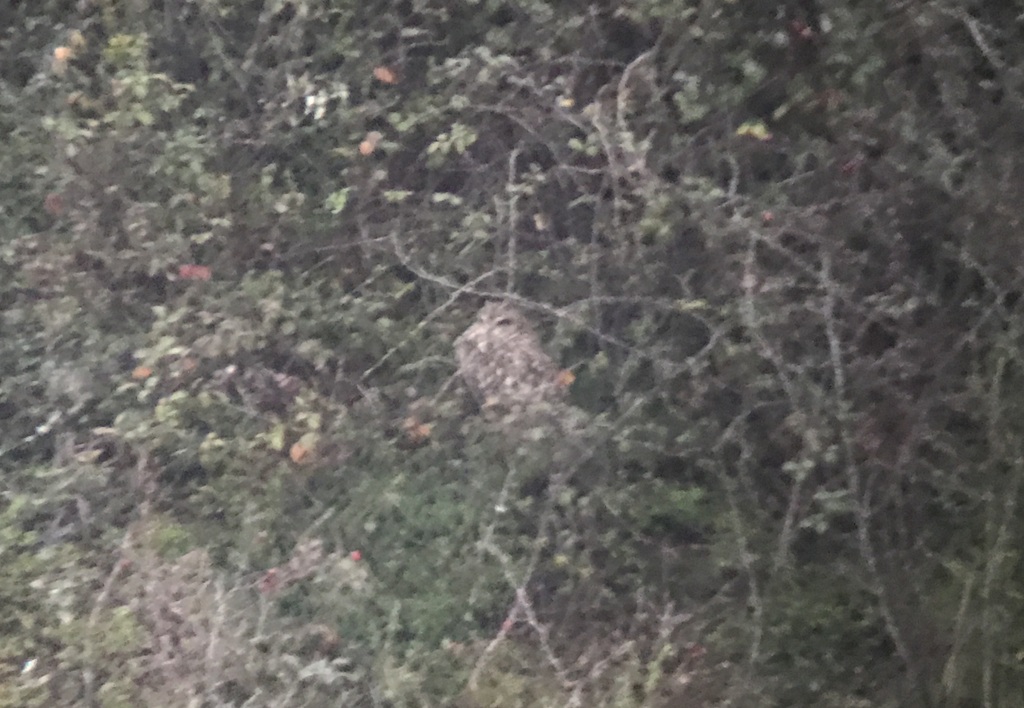
There were lots of ducks and geese on the pits, mainly Greylags and Wigeon. A feral Barnacle Goose was standing on the grass just beyond. A large number of Cormorants had come in to roost on the islands.
It was starting to get dark now, but we could see two white shapes at the far end of the pit. The first was a Little Egret, but the second looked a bit bigger. Through the scope our suspicions were confirmed, it was a Spoonbill. The vast majority of the Spoonbills which were here in the summer have long since headed off south for the winter, with just one or two still remaining here, so this was a real bonus.
Back at the Wash, a large group of Knot had now gathered together in another dark slick spread across the mud, out in the middle. We had thought we might have a quick look at the pit from Rotary Hide, but just at that point something spooked all the waders. All the Golden Plover took off and started to whirl round in the air, and the Knot zoomed back and forth low over the mud, twisting and turning, flashing dark and light.


It was a nice way to end our two days out, watching the huge flocks of waders whirling out over the Wash. We had hoped we might be able to catch the first of the geese coming in to roost from here, but it was still a bit early and unfortunately we had to get back to the village in time for a pick-up. While we were waiting in the car at the rendezvous point though, the skeins of Pink-footed Geese started to come over calling, thousands of them. One of the real sights and sounds of Norfolk in the winter and a very fitting finish.
















